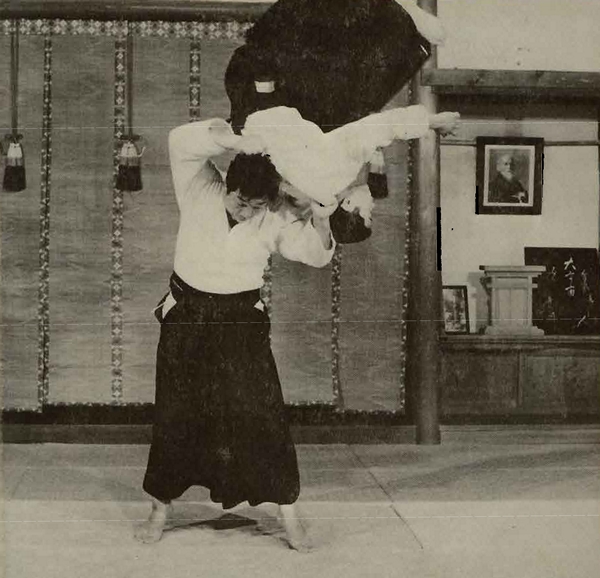 Morihiro Saito – Traditional Aikido Volume 4
Morihiro Saito – Traditional Aikido Volume 4
When O-Sensei was not in Iwama, I was in charge of the teaching. I do not know who taught in Hombu dojo when O-Sensei was not there for obvious reasons, I was in Iwama. I rarely went to Hombu dojo. During 1960-61 O-Sensei was very vital. He then sometimes went to Tokyo to teach Aikido, though not many days would pass before students of the Hombu Dojo called me asking me to take O-Sensei home! O-Sensei was giving them a hard time, scolding them for not practising the correct way. In Iwama O-Sensei used to do his own practise in the mornings and then I was the only student to take part. In return for his special teaching I worked in O-Sensei’s farm.
Interview with Morihiro Saito Sensei by Mats Alexandersson
Morihiro Saito Sensei was born on March 31, 1928 in a farming village near the Iwama dojo where he would spend more than twenty years training directly with Aikido Founder Morihei Ueshiba. Due to his 24-hour on and 24-hour off working shift with the Japanese National Railroad he was able to spend long periods of time alone with Morihei Ueshiba as his student and training partner – particularly as the Founder formulated his post-war system of weapons training. Early morning classes were devoted to prayer at the Aiki Shrine followed by weapons practice, the study of Aiki-Ken and Aiki-Jo and their relationship to empty-handed techniques.
Morihiro Saito acted as the guardian of the Aiki Shrine until his passing in 2002. He is famous for his dedication to preserving the exact form of Morihei Ueshiba’s techniques as he was taught them during his training under him in Iwama.
This is the second section of the English translation of a three part interview that originally appeared in “Answers from Budoka” (“Budoka no Kotae” / 武道家の答え), published by BAB Japan in 2006. You may wish to read Part 1 before reading this section.
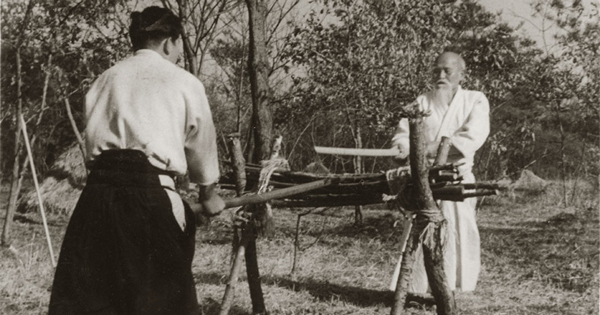 Morihiro Saito and Morihei Ueshiba
Morihiro Saito and Morihei Ueshiba
Tanren Uchi (“forge cutting”) in Iwama, 1955
Budoka no Kotae – Talking to Morihiro Saito Sensei, Part 2
Q: Is that everyday?
A: Yes. Mondays and holidays are off, but there are no days off for the uchi-deshi. They have training in the morning, for the first half of the day. In the evening, together with the sumi-komi (live-in) students, about thirty of forty students gather together.
Q: The dojo must get full, doesn’t it?
A: Right now there are ten people with just the sumi-komi students alone. They take their meals here, and they just reimburse us for the actual costs. But when they cook together a lot of problems come up! They come from different countries, there are people who don’t eat meat, or people who don’t eat fish.
Q: Especially with religious considerations, foreigners who are looking into things like Zen often don’t eat meat or fish, right?
A: That’s why I make it a condition of entrance that they not bring religion or politics with them. There are places in foreign countries that fight wars over religious differences, but here we function with absolutely no relation to that. The Kami-sama are enshrined in the dojo, but those Kami-sama have a connection to Budo that is not religious. They have been worshipped by warriors since ancient times, so there is no religious atmosphere. Everybody faces the front without reluctance, bows and claps their hands before starting practice.
Q: What about you? Is there some religion like Soto Zen Buddhism that has been passed down to you from your ancestors?
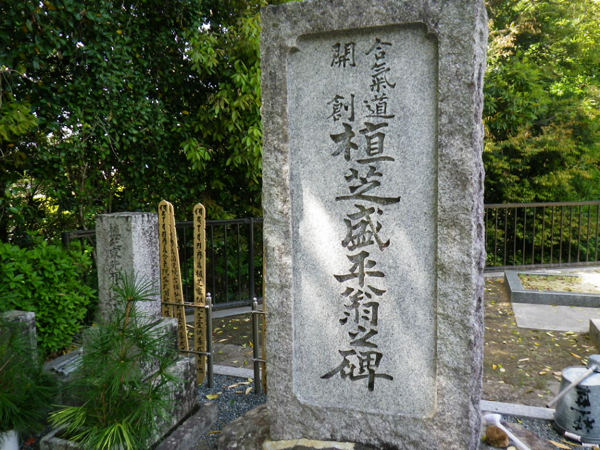 Aikido Founder Morihei Ueshiba’s grave in Kozanji
Aikido Founder Morihei Ueshiba’s grave in Kozanji
A: I was born into Shingon Buddhism, but there was no cemetery at that temple. A Soto Zen Buddhist temple nearby made a nice cemetery, so after I moved there I became a Soto Zen Buddhist. The Founder is now buried in a Shingon Buddhist temple in Tanabe, Wakayama called Kozanji (高山寺). One of his last wishes was “make me a grave here”, but for some reason Ni-Dai (Kisshomaru Ueshiba) had a grave in Wakayama Prefecture. That’s why people can’t take a day trip to visit the grave. It’s really pretty tough to get all the way to Wakayama.
In my case, since this was the Founder’s dojo, I believed that it is my responsibility to transmit what I was taught by the Founder. At one time a lot of things were said, but opinions have changed, and the number of requests to come here have greatly increased.
We first built a foundation of static training (個体稽古). Then the method built in stages into flowing techniques and then throwing without touching.
Q: Both here and Hombu Dojo must each have their own good points, this is is a wonderful place, isn’t it?
A: Any path is the same, but in those days the method of teaching was differentiated depending upon the dojo.
Q: Differentiated in what way?
A: Rather than saying that it was differentiated, it may be that the teaching became differentiated. In the end, in a place where one teaches for four days, or a place where one teaches for one week, or a place where one teaches 365 days a year the method of teaching changes.
Q: How was the teaching done here?
A: As you might expect, we first built a foundation of static training (個体稽古). Then the method built in stages into flowing techniques and then throwing without touching. Flowing techniques were from third-dan, so in the beginning we were only allowed to do static training, but now flowing training is the primary focus in Tokyo.
When one uses strength in Tokyo they get scolded. That’s the difference. We were taught to hold on strongly, to hold firmly in grabbing techniques.
Further, the Founder always emphasized strongly in his teaching that the sword, the staff and empty hand techniques are one thing. We are doing it that way, but in Tokyo the sword and the staff are not taught at all.
Q: Not at all?
A: They don’t teach it at all. For that reason, the fact of the matter is that high ranking students in Tokyo go to Iaido to learn the sword, or Muso-ryu (Shinto Muso-ryu Jodo) to learn the staff. The Founder did not teach either the sword or the staff in Tokyo. Here he taught everything from the basics on up…. We’re in the middle of student camps right now, students from Osaka Prefecture University were here and tonight students from Tokushima University will be coming. We’ll continue with the camps until the beginning of April.
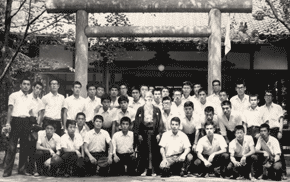 Aikido Founder Morihei Ueshiba with students from Meiji University in Iwama
Aikido Founder Morihei Ueshiba with students from Meiji University in Iwama
Yasuo Kobayashi – front, second from right
Q: How many people come from each university?
A: If too many come then we can’t accommodate them, so we limit it to about twenty people. Ibaraki University, Japan University, MIyagi University of Education, Tohoku University, Iwate University, Hirosaki University, the other day the students from Osaka Prefecture University went home, tonight Tokushima University comes, and when they’re finished Kanagawa University and Aichi University will come and then we’ll finally be done.
Three or four nights, or at the most five nights. We have all of the necessities for preparing meals, so the students go shopping and cook their own food.
Q: And they are normally each taught by the shihan in their area?
A: Yes, that’s right.
Q: Are those shihan very junior to you?
A: Yes, there aren’t very many people senior to me.
Q: It must be very exciting for them to come here, isn’t it?
A: Of course, since this was the dojo where the Founder performed his shugyo. But was that Tanabe? Some place inconvenient. Ha-ha-ha, in the morning they train outside swinging the sword and the staff. In the evening they train with the regular students. So there are more than sixty people and nobody can move! Ha-ha-ha-ha.
Q: Is that so?
A: Previously we had thirty-six mats (Note: tatami mats, about three feet by six feet each), but when the students began to come, the Founder in his later years said to expand that and we expanded the mat space. This is sixy mats, and I’m feeling that it would be good to have at least a hundred. But there are methods of training, no matter how tight the space is.
“The basic principle of Aikido is just to attack.”
Q: Is exchanging techniques with the ordinary students helpful to you?
A: For that reason, they go home happy.
Q: How does that work? In terms of level.
A: Depending upon the school it can be very different. Also, the teachers who bring students here are very broad minded! Because there are also many shihan who tell their students not to come here. Many of those are in Hombu in Tokyo – “Don’t go to Iwama!”, they say. A shihan at one of the universities is also an instructor at Hombu, but he says “Don’t go to Iwama!” and doesn’t allow his students to come here. Because we do static training here. When they learn and then go home it’s difficult to train with them.
Q: Subtle differences emerge?
A: Yes, they do. It’s a little embarrassing to talk about, but all paths tend to split in multiple directions…
Q: Looking at things in the long term, are there clear differences and destinations depending upon whether one does static practice or soft practice?
A: A clear result emerges! Oh yes, during combined training, it can be clearly seen there. It’s not even worth arguing about.
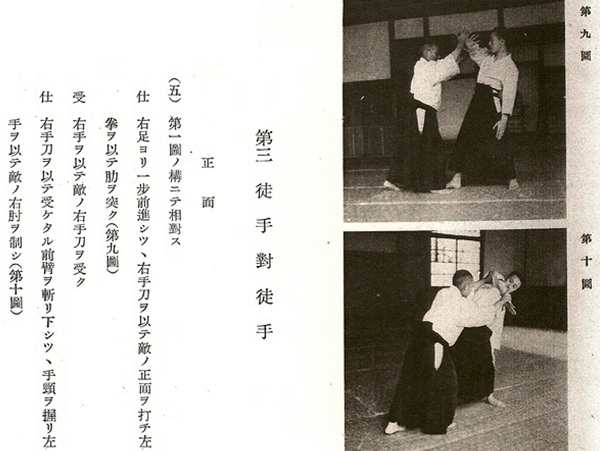 Morihei Ueshiba initiates with an attack
Morihei Ueshiba initiates with an attack
Budo – Moritaka Ueshiba’s 1938 Technical Manual
The Budo in which one attacks first
Q: By the way, many people say “in the Budo called Aikido there are no attacking techniques.”?
A: No, that’s ridiculous, the basic principle of Aikido is just to attack. Rather than talking about striking, by “attack” we mean that the basic principle is to strike the opponent and draw them out. It’s not a crushing blow, one enters in flash and when the opponent moves to counter they must extend their hand. To trap that hand is a basic principle.
Q: That makes sense, doesn’t it?
A: There are many places that don’t know this and practice by just waiting for the other person to come strike. The basic principle is different. Shomenuchi, you know, all starts with with an attack from my side. Like the example in this book, one strikes and moves forward, then grabs their chest.
Q: I see, One strikes from their side and then makes them receive the attack…this is a precondition.
A: Also right here in the Founder’s book it says “Move forward from your side and attack”. Recently people from that other school all said there are no attacks in Aikido, but that is mistaken. The basic principle is to attack… It is said “There is no defense that surpasses an attack” (攻撃に勝る防御なし) – at least in the case of shomenuchi, that is an attack.
Q: Is what you’re calling an attack different than what you’d see in the case of combat sports?
A: It’s different. It’s a matter of drawing out the opponent’s Ki, or absorbing their feelings, or matching with them, or connecting with them, and then controlling them.
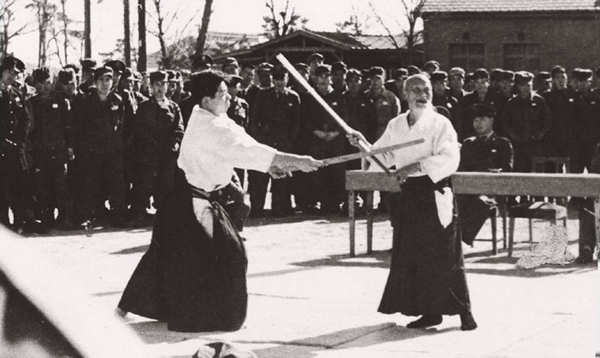 Demonstration for the Jieitai (“Self Defense Forces)
Demonstration for the Jieitai (“Self Defense Forces)
Morihiro Saito and Morihei Ueshiba, 1955
Aikido is bodywork like swordwork
(and swordwork like bodywork)
Q: When you do that, is it also possible to explain that in the context of the so-called combat arts?
A: Yes, when one really moves in accordance to the principles, the movement of one against many is connected to the handling of the sword, and connected to the movements of the staff. For that reason, in Aikido one must also train in sword and staff that is specifically for Aikido. Whichever one you omit, your Aikido will not be complete.
It may be annoying for me to repeat this, but that group in Tokyo, perhaps because they have too much pride, don’t come here to learn. They learn the sword through Iaido and the staff through Muso-ryu. In Iaido it’s like the sword is put against the waist. In Aikido we do it while twisting the hips. It’s the opposite! In Iai one thrusts the hips forward and then draws them back in a flash, but in the sword of Aikido we twist the hips and pull.
Iaido is a wonderful Budo, but in the case of Aikido the meaning and the goals are different, so they are incompatible. Further, in the end the method of using the staff in Aikido and Muso-ryu is different. Because in Aikido the unified principles of bodywork like swordwork and swordwork like bodywork are one.
Q: Here everything is like that?
A: That’s how we are doing it. This may be the only place in the world. However, the Founder taught everything from these kinds of basics here, he didn’t teach them in Tokyo.
Published by: Christopher Li – Honolulu, HI
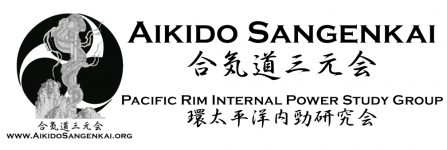
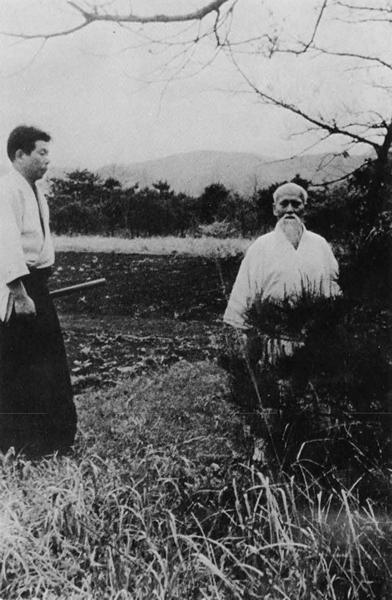
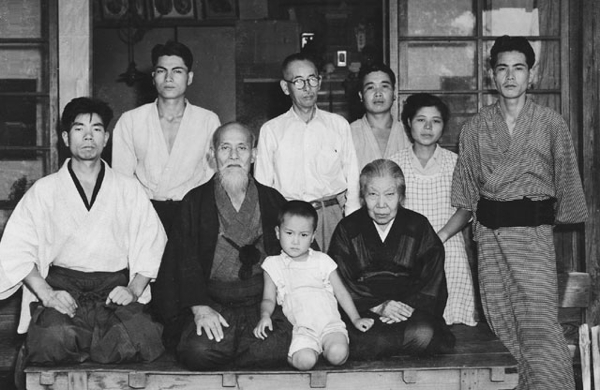
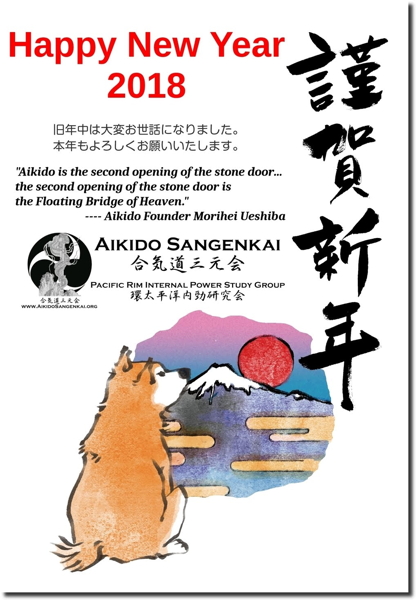
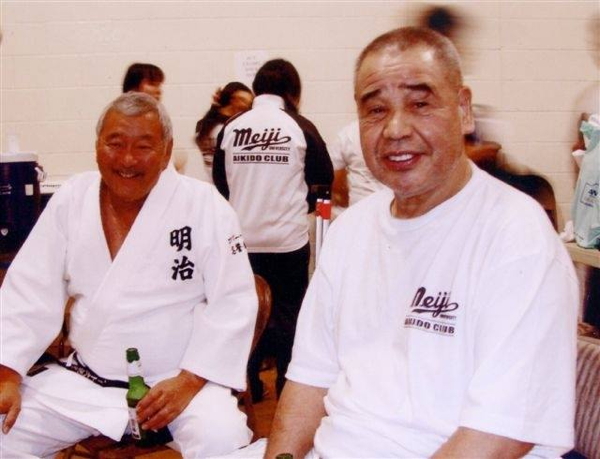
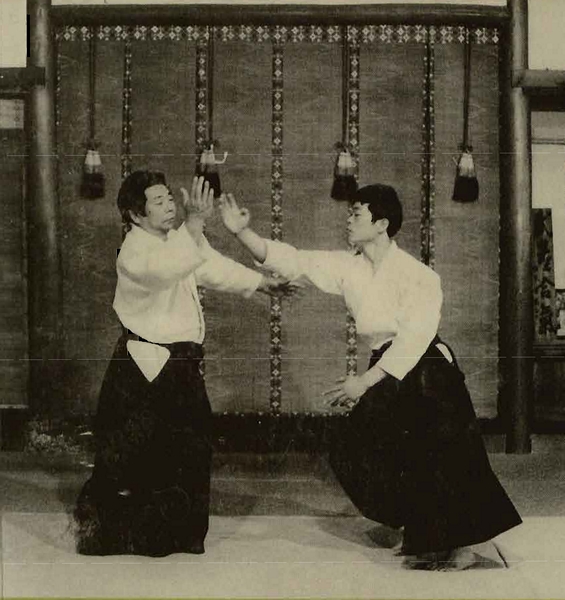
Thank you
You’re welcome!
Best,
Chris
Thank you for this excellent article, Chris. You’re providing a great service to the aiki world.
Thank you David. You’re making me blush!
Best,
Chris
Definitely an interesting article Chris! Thank you very much for the informative read!!
Thanks Nick!
Best,
Chris
Dear Christopher,
I’m interested in the passage that reads “In Iaido it’s like the sword is put against the waist. In Aikido we do it while twisting the hips. It’s the opposite! In Iai one thrusts the hips forward and then draws them back in a flash, but in the sword of Aikido we twist the hips and pull.”
Could you give more information about the meaning or possibly the original wording? I’m wondering whether he is referring to sword-drawing or another technique.
Best wishes
Christoph
Hi Christoph,
It’s not completely clear, but fro. I the wording it seems to me that he’s talking about drawing the sword.
Best,
Chris
Thanks for your reply. It does fit the drawing of the sword in Iaido, where the hips are turned 45° during draw and then turned back.
But I have never heard that in Aikido the sword is handled by twisting the hips and pulling. Since many people like myself learn sword-handling from Iaido, there would be something to learn here. If only one could still ask him…
Hello Chris,
Could you explain or give some context on this extract from the above interview ?
“Q: How was the teaching done here?
A: […] then throwing without touching. […]”
It seems rather strange coming from Saito Sensei and I guess it doesn’t mean what it seems.
Thanks in advance,
Best regards,
I believe that he was talking about the fourth of the four stages here – kotai, jutai, ryutai, kitai. I believe that there’s a video of the Friendship Demonstration where he also discusses this.
Hope that helps!
Chris